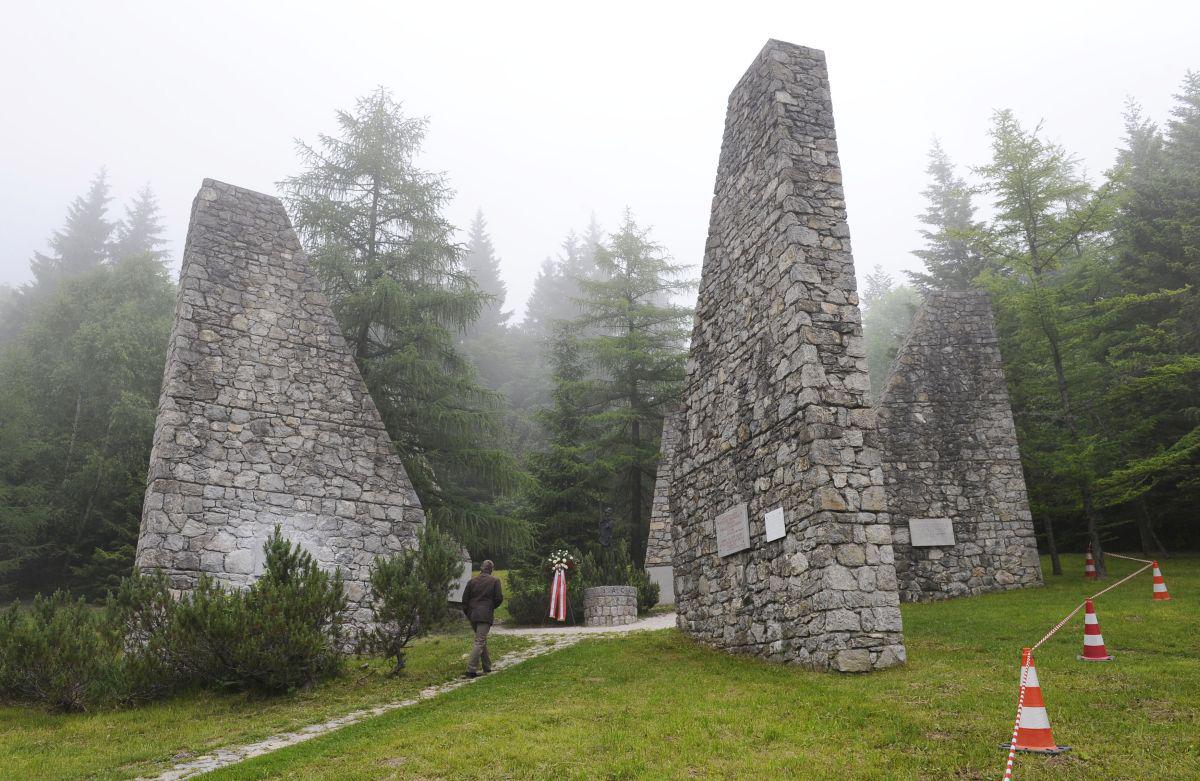
High in the Karavanke mountain range, just beneath the Ljubelj tunnel, which connects Slovenia with Austria, lies a remarkable memorial. Most travelers pass it by, but those who make a stop are reminded of one of the darkest chapters in Slovenian history.
During World War II, Ljubelj was the site of the only Nazi concentration camp on Slovenian soil. A subsidiary of Austria’s infamous Mauthausen concentration camp, the camp at Ljubelj ultimately housed more than 1800 prisoners who were brought in to build the nearby tunnel. Many of the prisoners were POWs from Britain, France, and Slovenia; others were political prisoners who had been arrested for opposing the Nazi regime. These two groups of inmates received particularly harsh treatment – far worse than the civilian criminals who also worked in the camp.
The work in the tunnel was grueling, but the punishment for those unable to work was worse. The weakest inmates were routinely sent to the main camp at Mauthausen, where almost certain death awaited them. Others were murdered by the Ljubelj camp’s doctor, who used alcohol injections to kill. Eventually, a small crematorium had to be built in the camp to dispose of the dead: the executed, those tortured to death, and the victims of overwork.
Amidst all the horror, glimpses of humanity were occasionally on display. French civilian laborers, who also worked on the tunnel but were housed separately (as part of a Vichy labor program), often risked their own lives by helping to smuggle goods and letters to the camp inmates. And local residents surreptitiously gave food to newly arrived inmates.
For the most part, however, the conditions in the camp were extremely bleak, and prisoners made several escape attempts. Some made their way to freedom, but many others were recaptured and sent directly to Mauthausen, where they were killed.
In April 1945, Germany was losing the war and Slovenia’s Partisan guerillas began to approach the camp. Most of the Slovenian inmates were released, but the camp guards tried to escape by taking many of the remaining prisoners hostage. They were finally captured in Austria and turned over to the allies. The commander of the Ljubelj camp, Jakob Winker, was executed by the British for crimes against humanity.
After the war, the ruins of the camp were turned into a memorial, based on the design of Boris Kobe. Overlooking the site of the camp is a statue by Jože Bertocelj, a sculptor from the famous Kropa ironworks. The preserved crematorium reminds visitors of the horrors that took place in the camp, and a French-language sign reading “J’Accuse” speaks for the many who gave their lives for freedom. Each year, a ceremony is held at the site in honor of the victims.

































































